How To Build A Zip Gun
Closely associated with 'juvenile malversation' of the 1950s, 'nada guns' were often fabricated by youngsters who could not afford to purchase or were forbidden from owning the 18-carat commodity. A mechanically inclined youngster might upon obtaining ammunition, virtually often widely bachelor .22 rimfire, find that such rounds will fit into a department of suitably sized steel tubing, ofttimes a section of the salvaged car radio antenna. From and so on it is a unproblematic matter of fabricating a means of striking the rear of the cartridge while ensuring the entire assembly is held firmly together.
Such weapons, while being extremely rough are simply every bit capable equally inflicting a lethal injury upon a close target as a conventional pistol. Due to bullets tumbling due to lack of rifling, injuries inflicted can potentially be worse. Considering of their ease of structure and requiring no tools or expenses, noesis of how to brand nada guns quickly spread from street gang to street gang culminating in fairly standardized designs beingness adopted. Zip guns would sometimes be produced every bit a group endeavor, oftentimes making use of a schoolhouse workshop resulting in amend precision and reliability through the utilize of superior materials and machine tools.
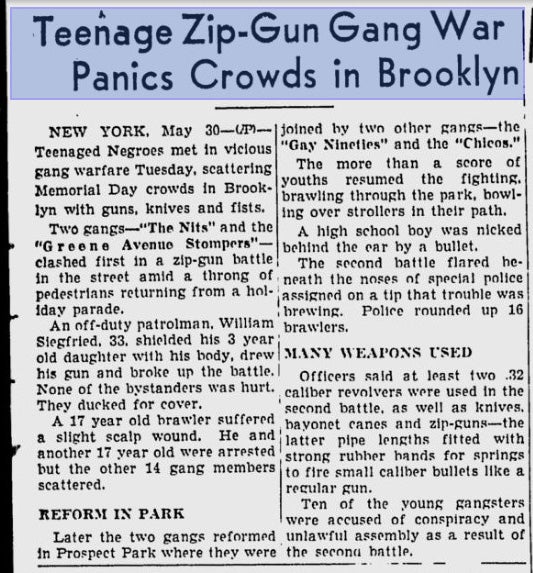
The Original Ghost Guns
Although most of these may be extremely crude, such zippo-price disposable pistols became a serious concern for authorities at the fourth dimension, frequently beingness used to seriously hurt and sometimes impale. The emergence of cheap commercially produced handguns may have contributed to the eventual fall in the number of improvised weapons existence encountered towards the tardily '60s, perchance coupled with the turn down in creative hands-on skills of teenagers.

Cypher gun carried by a gang member. (El Passo Times, 1950)
One of the most common (and reliable) methods of constructing a zip gun is to attach a door bolt to a wooden handle having a barrel made from a section of steel tube securely taped to it. Elastic bands are tied around the handle of the door bolt to deed as a striker. The weight of the heavy door bolt behind the cartridge prevents it from flying back also fast and rupturing upon firing, a factor adding to the user'southward safety. Where commercial ammunition was difficult to obtain, a mutual method was to obtain .22 starting pistol 'crimp' blanks and combine them with an airgun pellet to produce a round with similar power to .22 short.
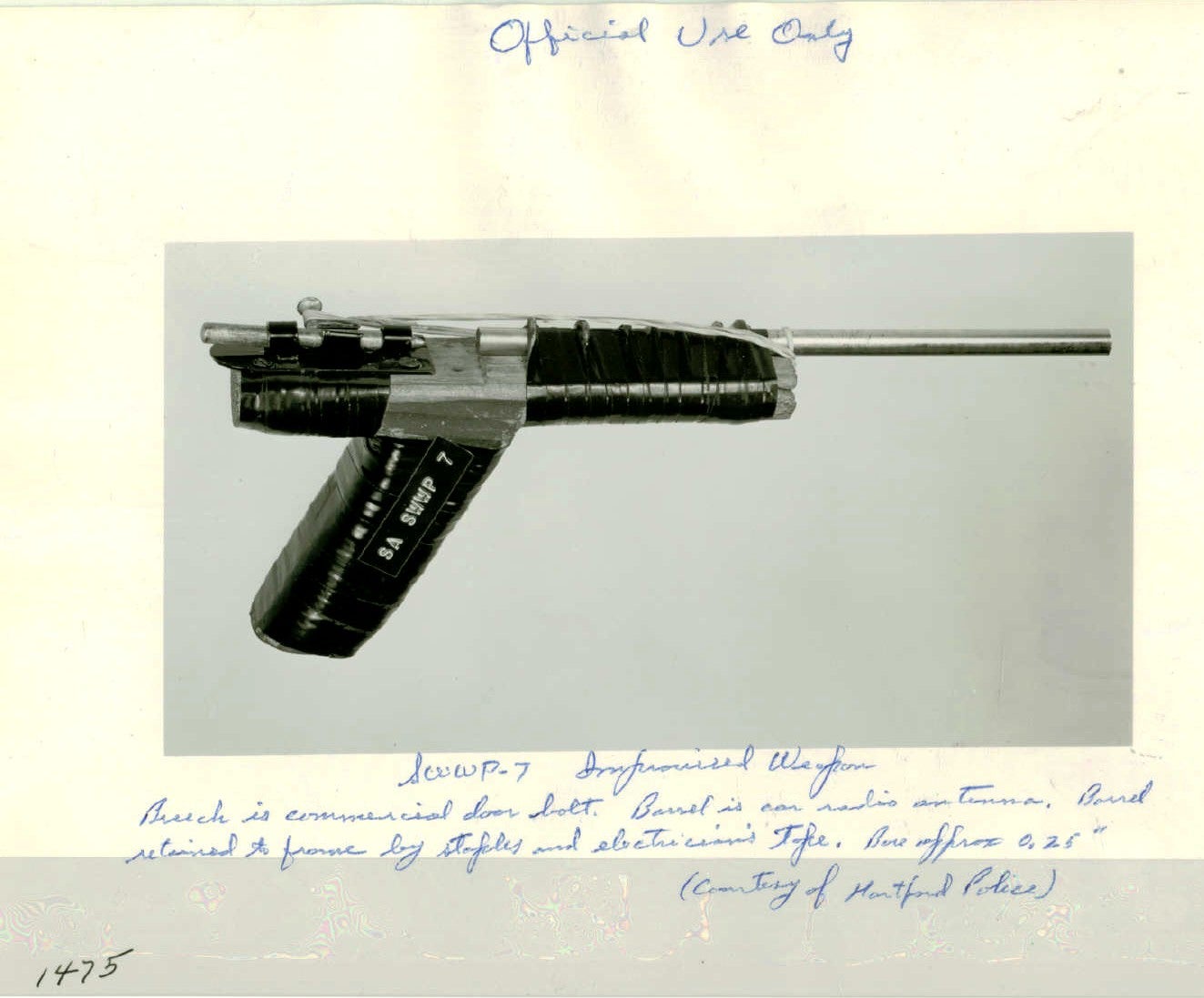
A zip gun made using a department of machine aerial antenna and a door bolt seized past Hartford police force. Courtesy of Springfield Armory Museum.
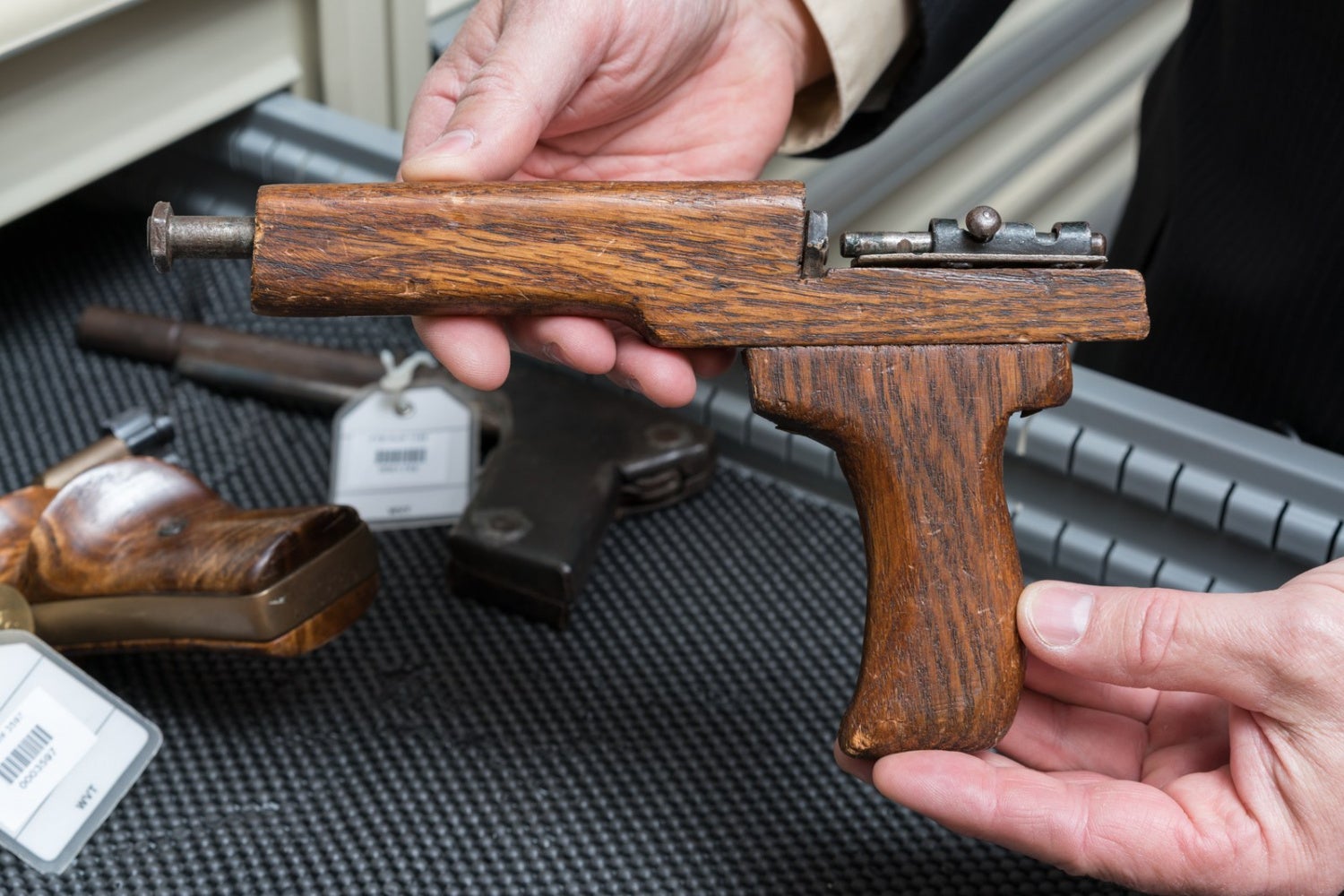
Zip gun held at the ATF Firearms Reference Collection.
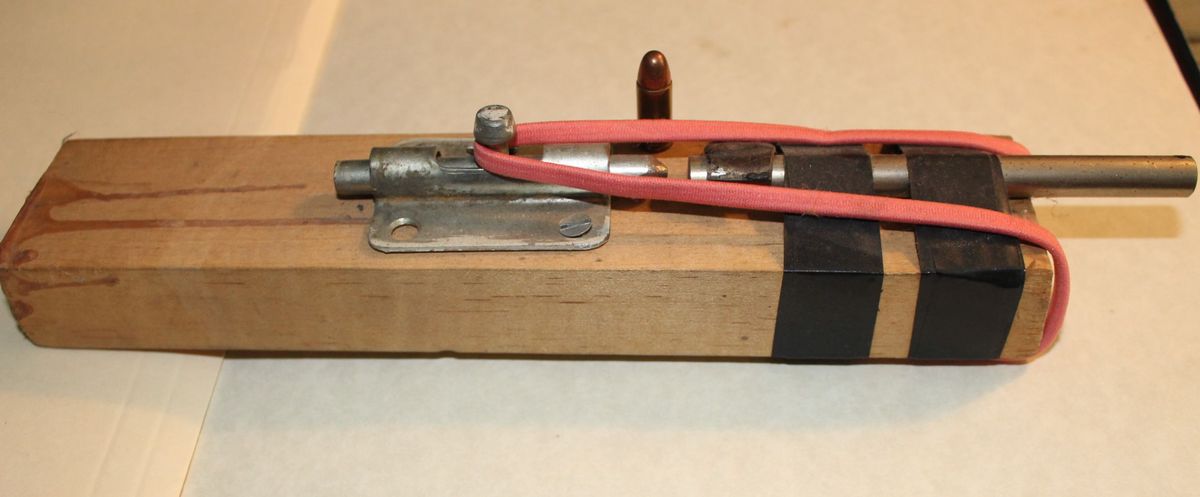
A .25 quotient zippo gun recently seized past police harks back to the classic door bolt types of the 50s.
Another simple model which according to police reports at the fourth dimension began turning up in big numbers in New York City used nothing more than than a length of motorcar radio antenna, a nail, a safe band and two pieces of tape. The large blast slides into the dorsum portion of the antenna tube and the tip is filed to the correct shape to successfully set off a round of .22 rimfire. Alternatively, the metal shaft of a screwdriver may also be used, the chisel edge already beingness well suited. A slot the length of a .22 cartridge is filed beyond the centre of the antenna tube to allow loading of a round into the oversized front end 'barrel' section. A heavy safety band is cutting and both ends are taped at the front of the tube, the middle looped around and tapped to the back of the smash head in gild to provide enough force to strike the cartridge. When fired the cartridge ofttimes jams in the rear of the slot and will take impressions matching the blast and the tubing.
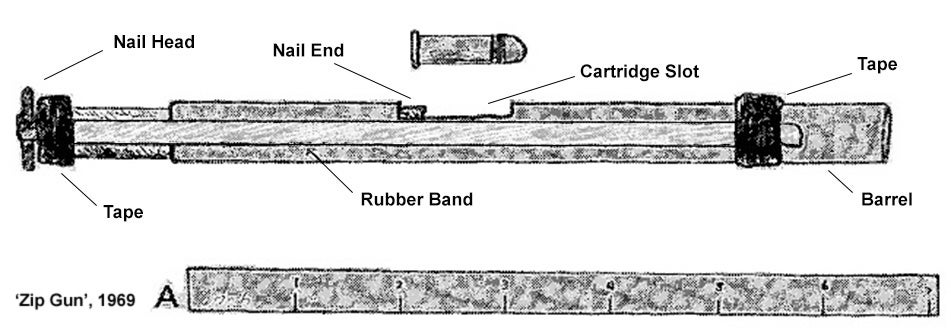
Below is an FBI bulletin describing a similar goose egg gun which was seized in San Antonio, Texas in 1964:
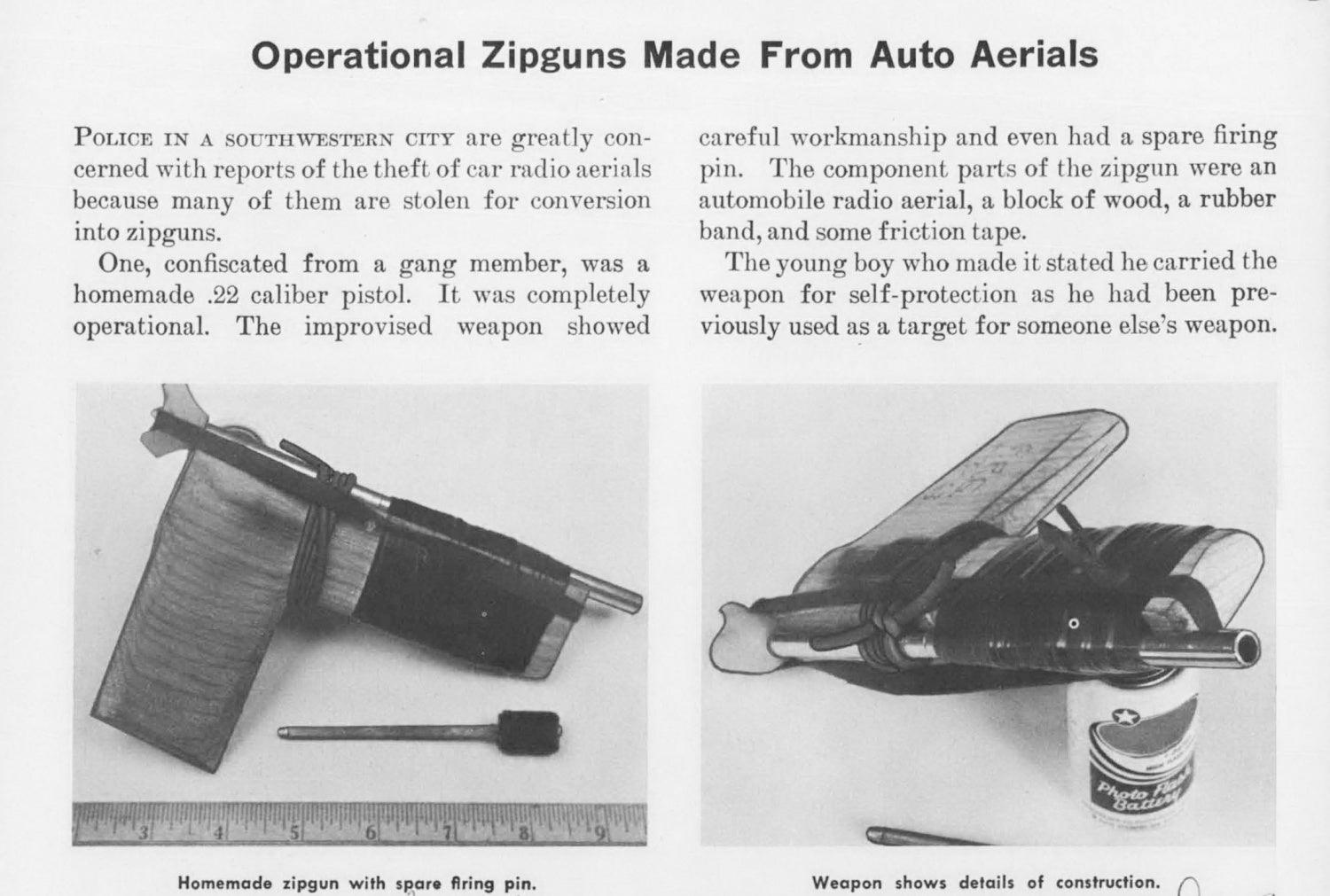
Some other trend often employed was the utilize of a house cardinal to serve as a hammer. The apply of one is out of convenience equally it requires petty to no modification, already having a pin pigsty in identify and a suitable hitting surface.
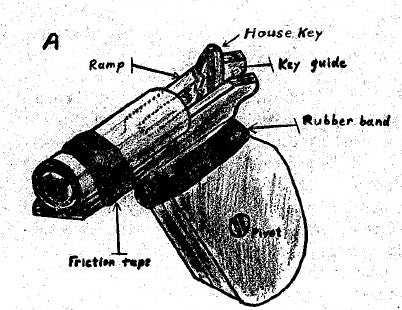
House cardinal type zip gun diagram, B.Koffler.

A zip gun synthetic using a length of auto antenna and a house key seized in New York City, 1959.
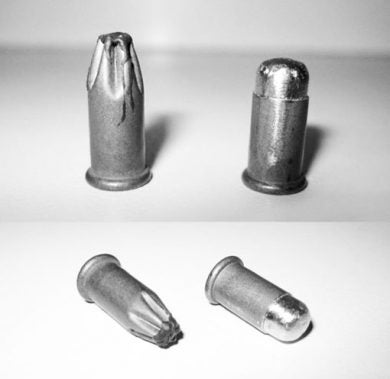
Modification of a nail gun ability charge with added atomic number 82 projectile.
Peradventure the most common type of zip gun is a modified toy cap gun. Commonly, the butt obstruction is removed and a section of car aerial tubing glued or taped in place equally a replacement barrel liner. The hammer would be sharpened to a indicate and elastic bands wrapped around the front of the frame and hammer to provide enough power to fire off a cartridge.
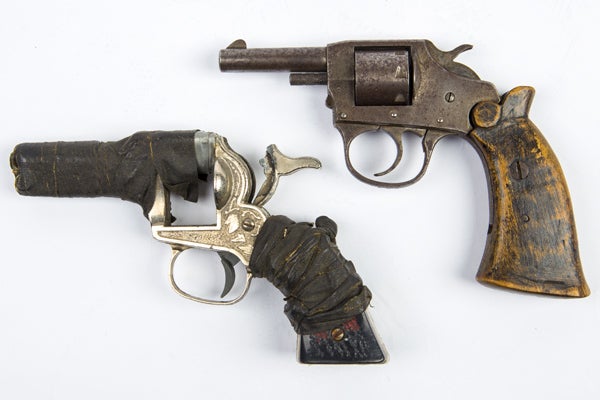
A .22 revolver and an improvised nil gun fabricated from a cap gun handed in past two ex Brooklyn gang members in 1957.
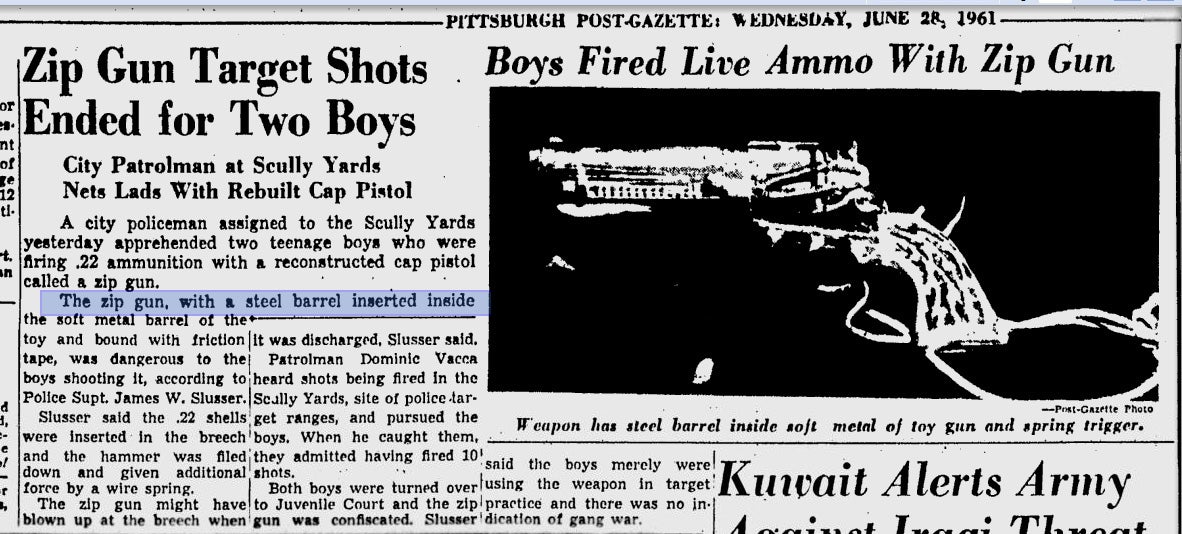
The excerpts below show that such rough weapons have none the less proven deadly on occasion:
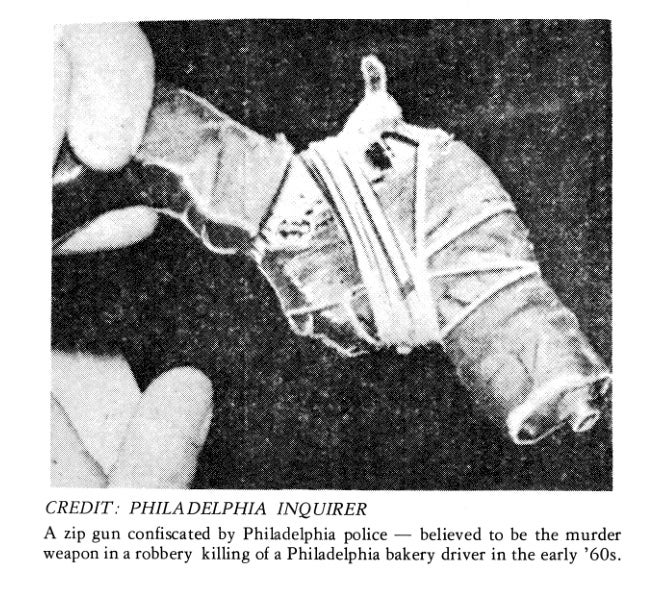
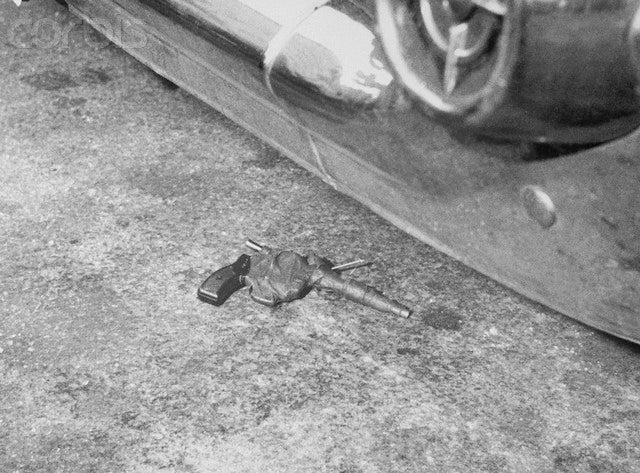
Above: 07 Oct 1967, Chicago, Illinois: A homemade zip gun under a parked car where it was found after the fatal shooting of James Butler, 15 during a fight between teenage gangs. Bettmann/CORBIS
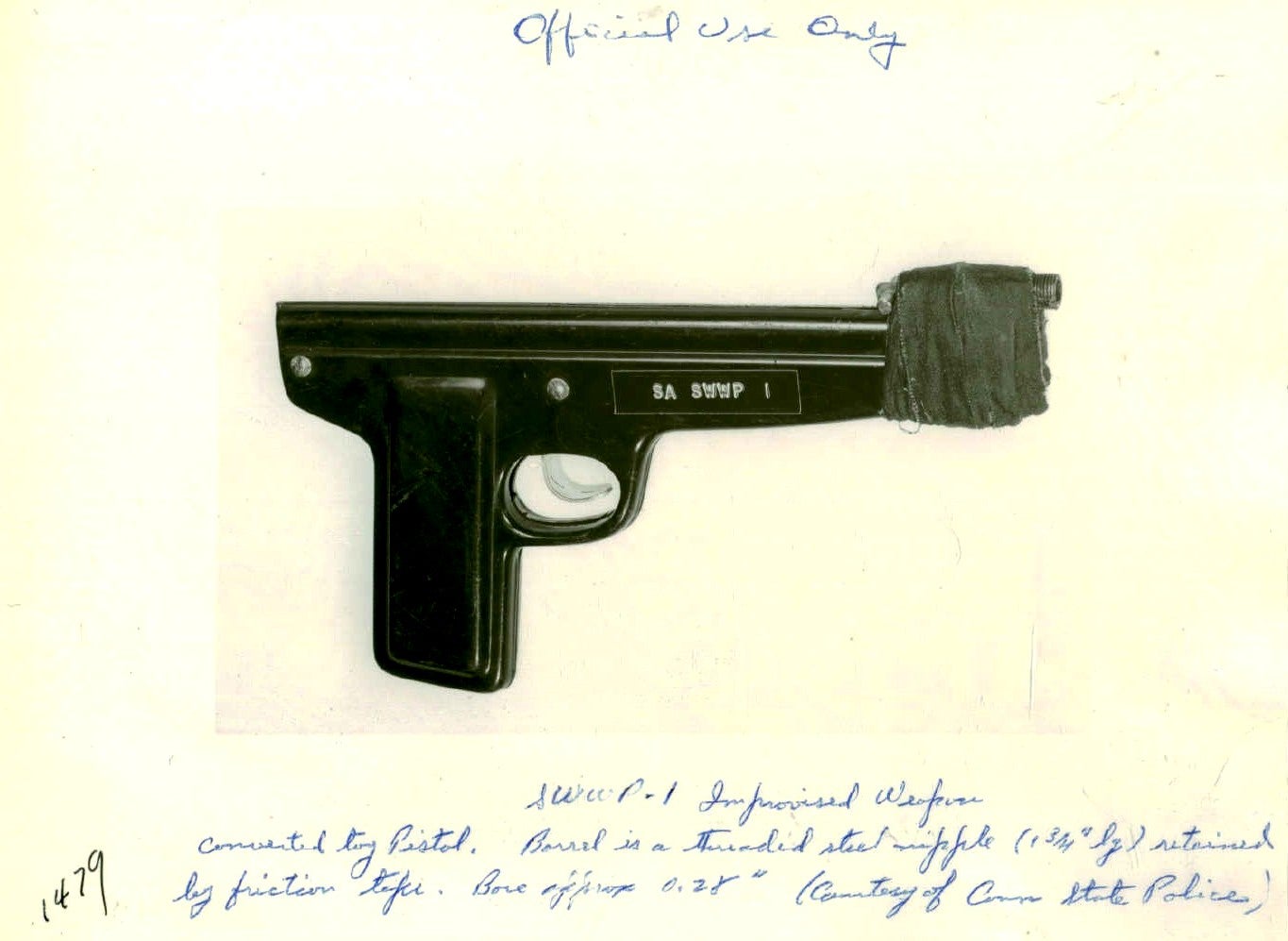
An adjusted toy pistol seized past Connecticut Country Police force, 1961. (Springfield Armory Museum)
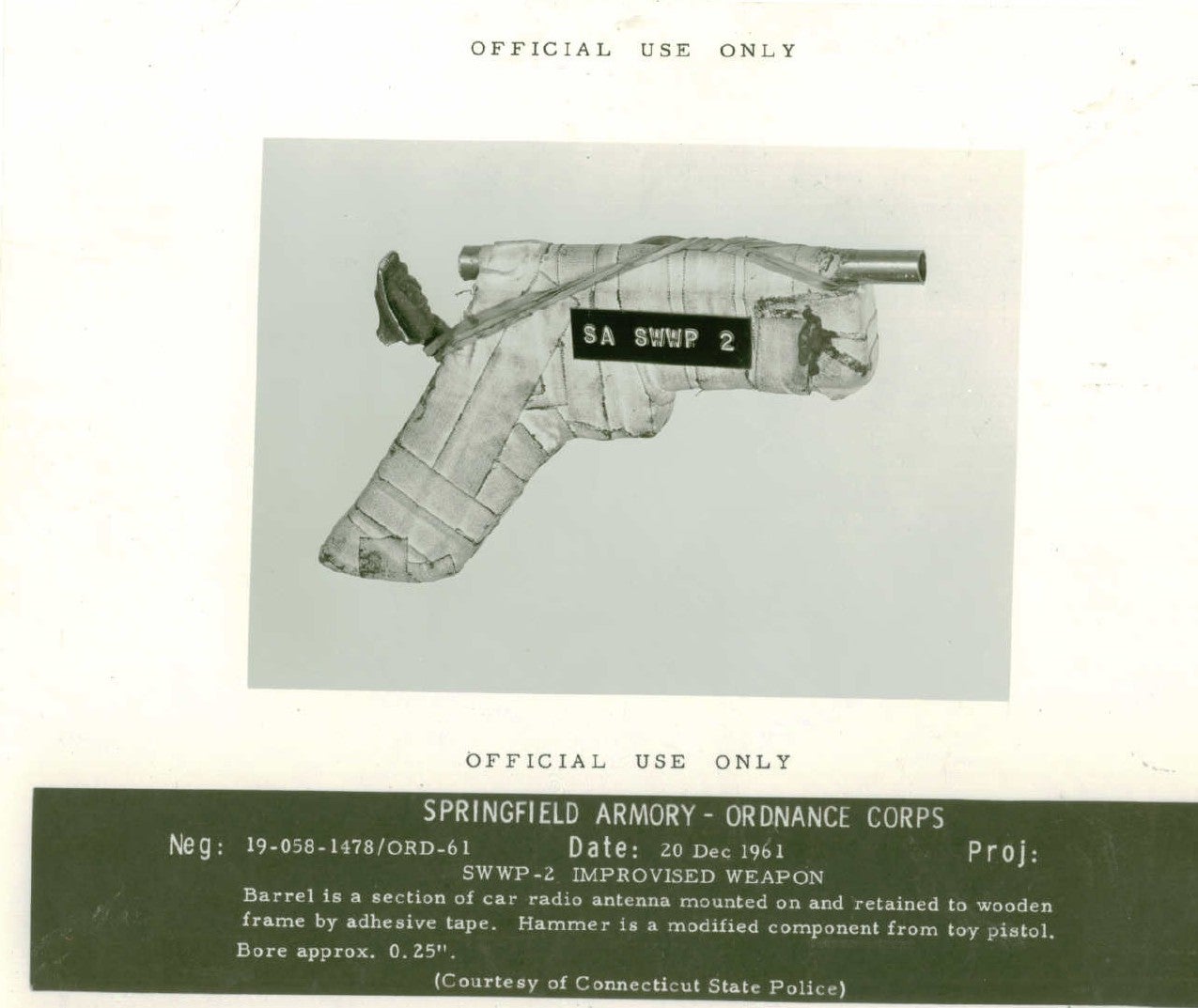
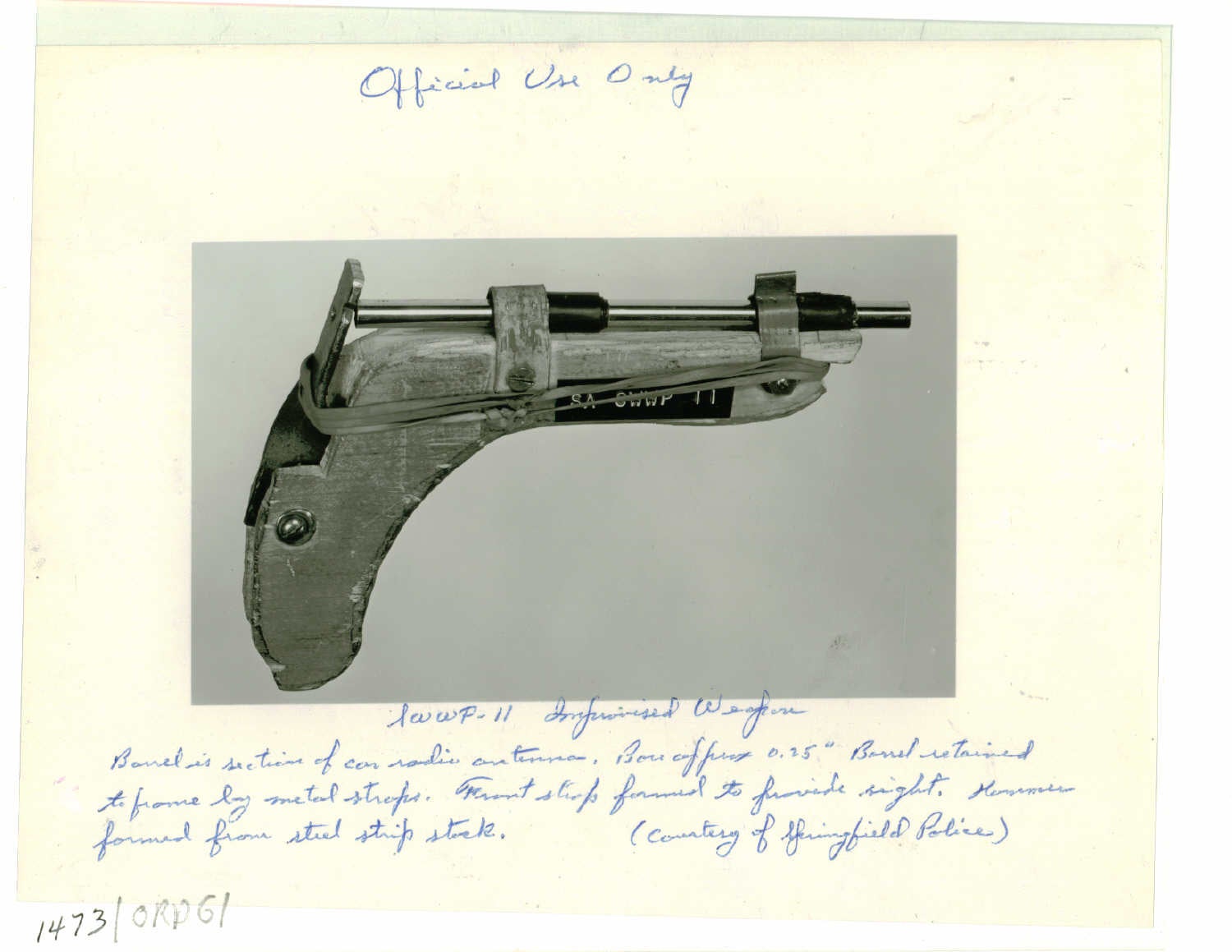
A zippo gun photographed in Dec 1961. The description notes that the barrel is a section of auto radio antenna with a bore diameter of .25. The hammer is formed from steel strip stock.
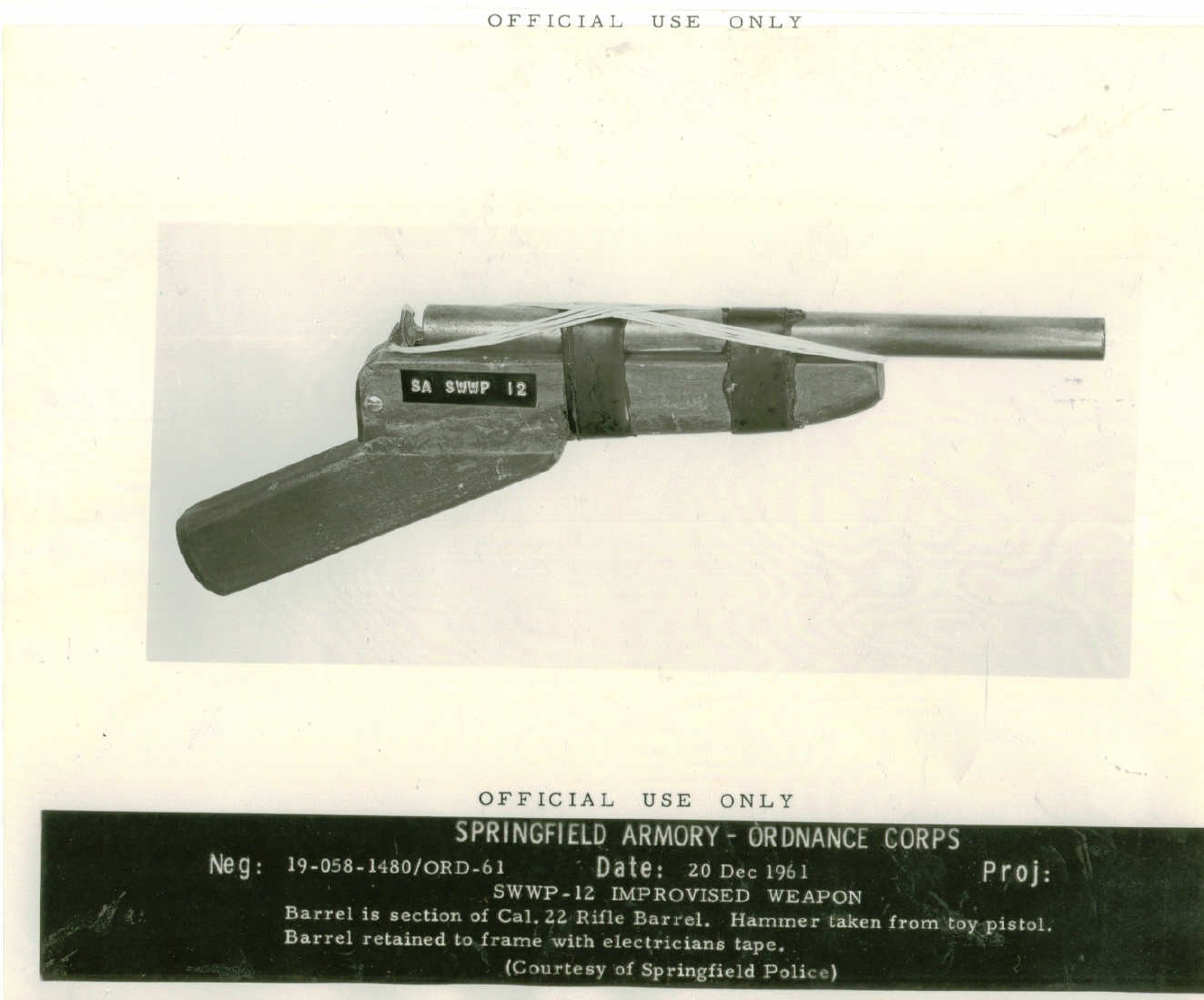
Zip guns in prison
Being held in the most restrictive and controlled environment which guild has provided, didn't stop these inmates from fabricating potentially lethal firearms from innocuous pieces of flake.
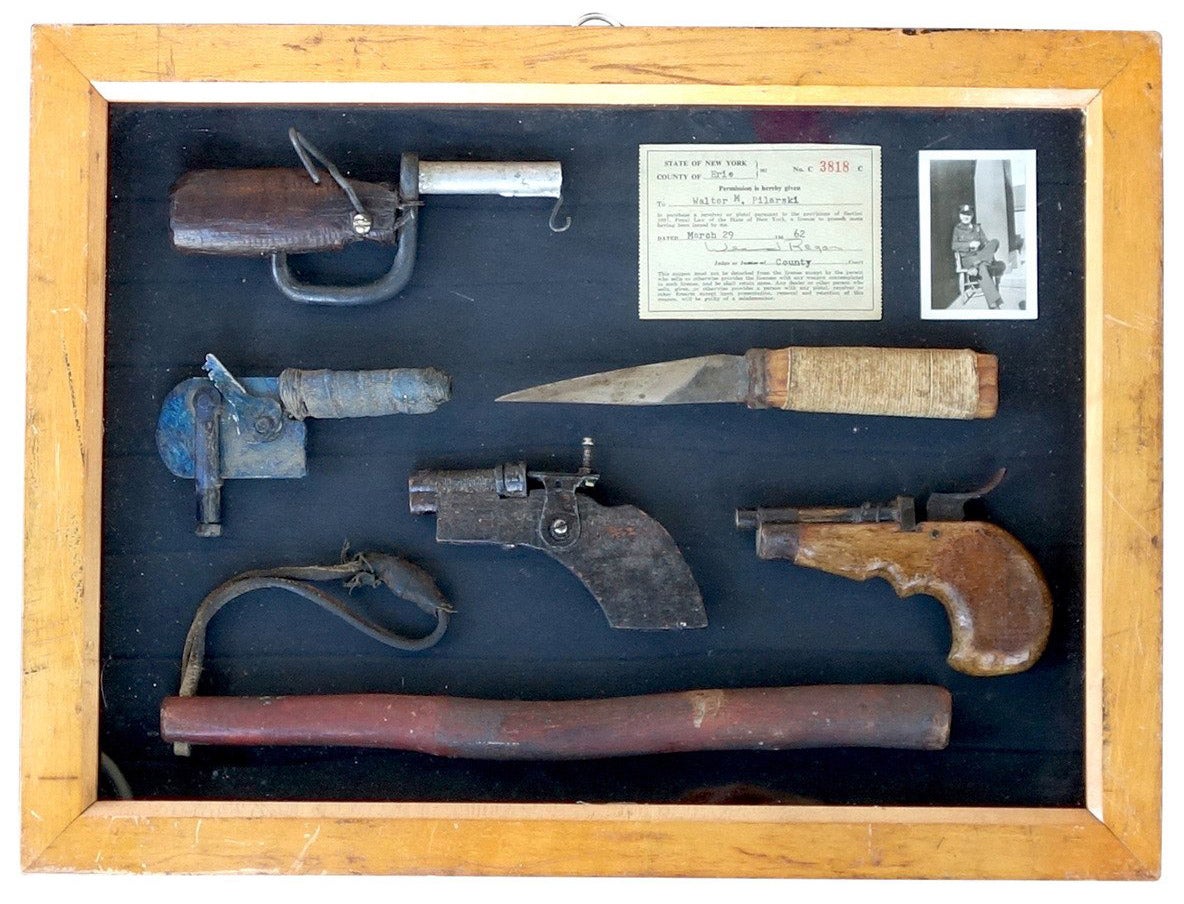
A display of zip guns, a shiv and lead-weighted baton confiscated from a New York prison house in 1950.
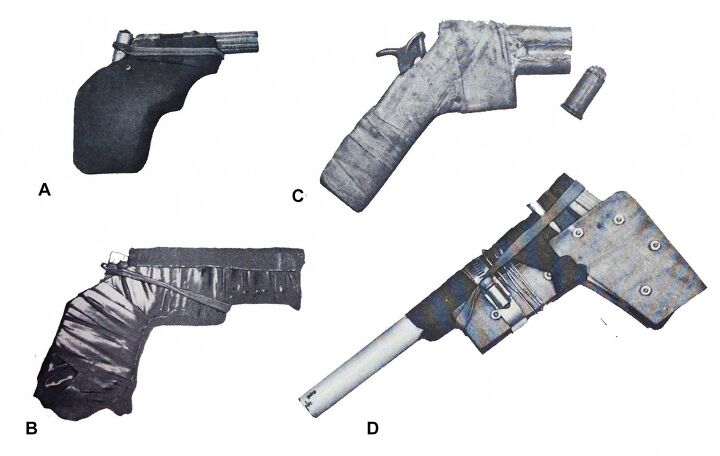
The goose egg guns above were confiscated from inmates at the Mississippi State Penitentiary. A was discovered on an inmate during a routine shakedown. B has a barrel made from a small piping, a hammer made from a horseshoe nail and made utilize of a razor handle. Along with gun C It was used during an attempted prison interruption. D is a 20 gauge shotgun pistol synthetic from a bedpost and scrap lumber and was used during a prison break in which a baby-sit was wounded and two inmates killed.
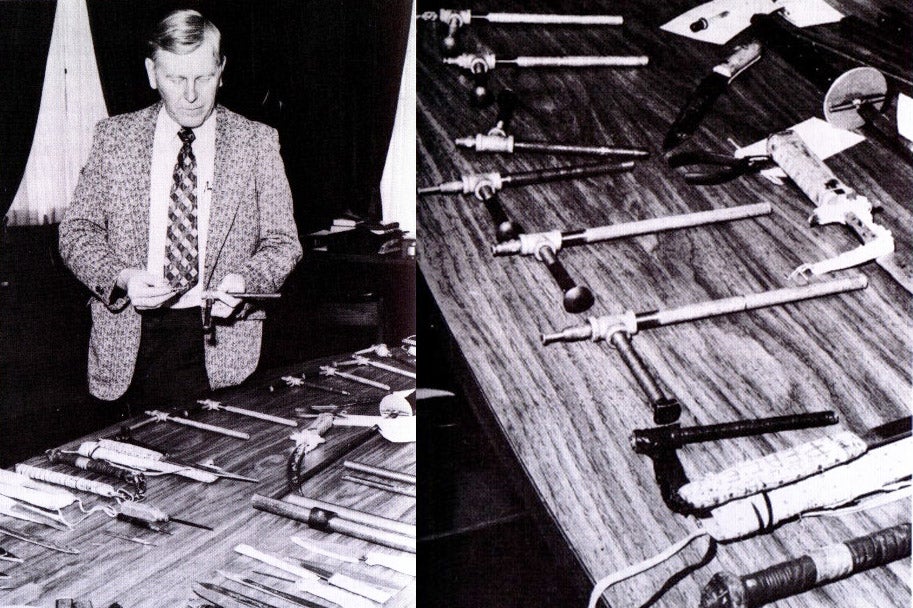
The former warden of the Indiana State Prison house, Leo Jenkins, holds i of several improvised pipe pistols made by inmates. Guns made using heavy pipe and plumbing fittings can be just as strong and reliable as commercially made weapons. (Photo: David Truby)
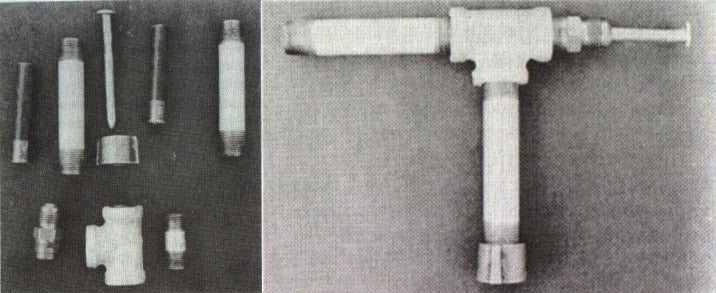
An well-nigh identical pipe pistol seized by Indiana constabulary fabricated entirely from items purchased at a hardware store. The grip holds an actress .410 crush.
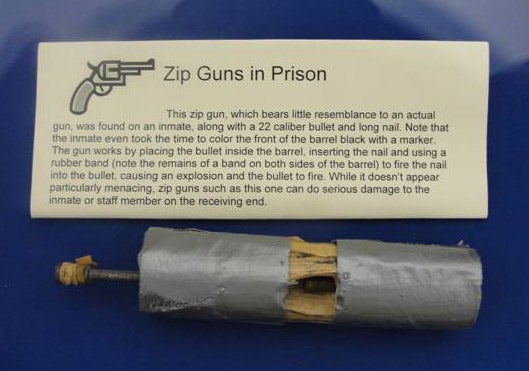


Improvised 'slap' guns made from a length of threaded gas pipe and an end cap drilled for a roofing boom. The weapons are fired by slapping the back driving the nail against the cartridge primer. Confiscated past Philadelphia land police. (Photo: David Truby)
Recently Improvised street guns have started to make a comeback. In a news report this month Winnipeg police reported that the number of improvised firearms seized went just from 3 in 2016, vi in 2017 to over lx last year in 2018. Many of these were reportedly made from cycle parts. No matter how many new laws are enacted to restrict the possession of firearms, a criminal is just a step away from walking into a hardware shop and assembling one of these.
Source: https://www.thefirearmblog.com/blog/2019/05/30/improvised-firearms-zip-guns-like-grandpa-used-to-make/

0 Response to "How To Build A Zip Gun"
Post a Comment